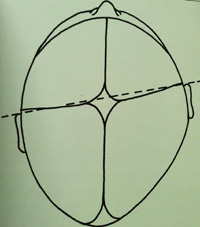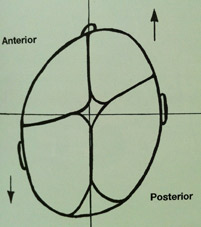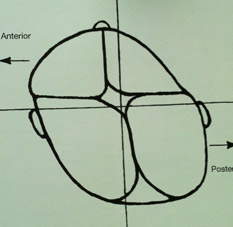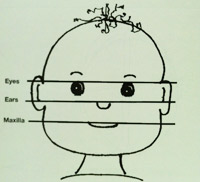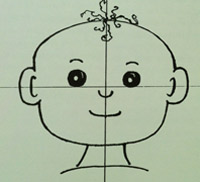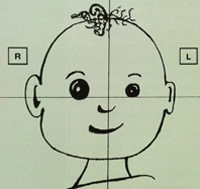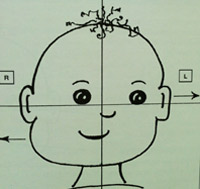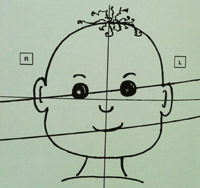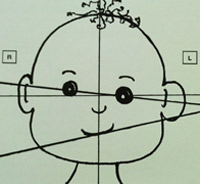Plagiocephaly in Hoover at Apol Chiropractic
 The term plagiocephaly is derived from the Greek words meaning oblique head. There are 3 types of plagiocephaly. One is a result of a genetic disorder. The second is caused by fusion of one or more of the cranial sutures (joints between the head bones), it is termed cranial sutural synostosis. If this second type is suspected, the child is referred out for imaging. Surgical intervention maybe indicated. The third type is referred to as Non-synostotic deformational plagiocephaly. The third type is very correctable by using advanced cranial adjusting techniques and without the use of cranial bands or helmets. The amount of pressure used during infant cranial corrections is the amount of pressure you could apply to your eye and still feel comfortable.
The term plagiocephaly is derived from the Greek words meaning oblique head. There are 3 types of plagiocephaly. One is a result of a genetic disorder. The second is caused by fusion of one or more of the cranial sutures (joints between the head bones), it is termed cranial sutural synostosis. If this second type is suspected, the child is referred out for imaging. Surgical intervention maybe indicated. The third type is referred to as Non-synostotic deformational plagiocephaly. The third type is very correctable by using advanced cranial adjusting techniques and without the use of cranial bands or helmets. The amount of pressure used during infant cranial corrections is the amount of pressure you could apply to your eye and still feel comfortable.
What is Plagiocephaly (flat head syndrome)?
Plagiocephaly refers to a deformity of the skull in which one side appears more developed than the other. When looking down at the top of your baby’s head, is one ear further forward? Does one side of the forehead seem more forward? Does the back of the head seem flatter on one side or do both sides appear flat?
![]()
When looking at your baby’s face, does one eye seem smaller than the other? Is one ear higher than the other? Does one cheek seem fuller than the other?
Everyone has some asymmetry. But if you notice many of the characteristics noted above, you may want to discuss this with me.
Frequently Asked Questions
Cranial Membranes
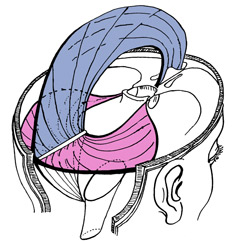
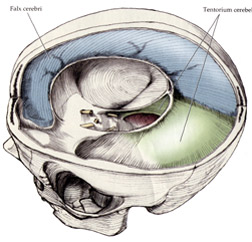
Cranial Base
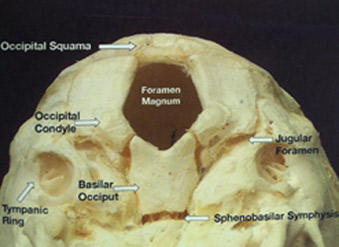
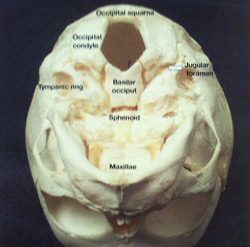
The distortions of the skull base, usually from birth, are not evident until the skull starts growing. The shape of the head should normalize within 24 hours after birth. Anything longer than that is indication for cranial examination. The skull expands rapidly the first 2-3 months which is why many believe the cause to be repeated prolonged pressure placed on one side of the skull or there is preferential turning of the head to one side. The turning to one side is also a symptom of a distorted skull base. It is true that during treatment and after care should be taken to not aggravate the distortions. Reference Cranial illustrations use from “Pregnancy and Paediatrics a Chiropractic Approach” by Steve Williams
What are some early indications my child has a cranial problem?
How do I know if my child is at risk?
- Mothers health
- Pelvic distortions (rotated hips)
- Fetal positioning
Birth process
- Fetal positioning
- Prolonged labor
- Forceps
- Vacuum extraction
- Caesarean section
What are the long term consequences if left uncorrected?
- Glasses don’t sit straight on your child due to facial asymmetry?
- Sports helmets don’t fit your child’s head?
- Your daughter can’t wear ponytails or other hairstyles like the other girls?
- Your son’s “real” head shape is visible if he gets a buzz cut?
Schedule an Appointment
Call us today to have your baby checked for plagiocephaly.
CONTACT US »


